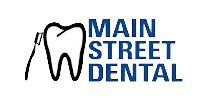Dental extractions for orthodontic purposes involve the removal of one or more teeth to create space in the mouth, allowing for the proper alignment of the remaining teeth. This procedure is often necessary when there is overcrowding, which can prevent teeth from aligning correctly with braces or other orthodontic appliances. Extracting specific teeth, usually premolars, can help achieve a balanced bite and improve orthodontic treatment's overall aesthetic and functional outcome. An orthodontist or oral surgeon carefully plans and performs the extraction, considering the patient's unique dental structure and treatment goals. Post-extraction, orthodontic appliances guide the remaining teeth to optimal positions, leading to a healthier and more attractive smile.
The Role of Dental Extractions in Orthodontic Treatment
- One of the primary reasons for extracting teeth in orthodontic treatment is to alleviate overcrowding. Overcrowding occurs when the jaw has insufficient space for all the teeth to fit comfortably. Orthodontists can create additional space by removing one or more teeth, typically premolars. This allows for effectively moving the remaining teeth into their proper positions, leading to a more balanced bite and improved alignment.
- In addition to relieving overcrowding, extractions in South Salt Lake, UT, can help correct bite issues such as overbites, underbites, and crossbites. By creating space, orthodontists can more accurately align the teeth and adjust the bite. This can prevent future dental problems, such as uneven wear or jaw strain, and contribute to oral health. Proper alignment also enhances the functional aspects of chewing and speaking, improving the patient's overall quality of life.
- Tooth extractions can simplify the mechanics of orthodontic appliances. For example, excess tooth structure can complicate the movement and adjustment of braces or clear aligners. By removing selected teeth, orthodontists can more effectively use the appliances to move the remaining teeth into their desired positions. This can lead to a more efficient treatment process and potentially shorter treatment times.
- An orthodontist makes the decision to extract teeth for orthodontic purposes after a thorough evaluation. This includes assessing the patient's dental and facial structures through X-rays and other diagnostic tools. The goal is to ensure that the extractions will address the specific issues and contribute to a successful orthodontic outcome. The orthodontist will also discuss the potential benefits and implications of extractions with the patient, including how they fit into the treatment plan.
The Dental Extraction Procedure
Initial Evaluation and Preparation
Before the extraction procedure, a thorough evaluation is conducted to determine the extraction need and plan the procedure. This typically involves a comprehensive dental examination, including X-rays, to assess the tooth's position and the surrounding bone structure. The dentist in South Salt Lake, UT, will discuss the procedure with the patient, including the reasons for extraction, potential risks, and the expected recovery process. If the patient has any concerns or questions, they should be addressed at this stage to ensure they are fully informed and comfortable.
Anesthesia and Tooth Removal
On the day of the extraction, the dentist will administer a local anesthetic to numb the area around the tooth, ensuring that the patient does not experience pain during the procedure. For patients with anxiety or for more complex extractions, sedation options may be offered to help them remain relaxed. Once the area is numb, the dentist will use specialized instruments to loosen the tooth from its socket. For simple extractions, the tooth can be removed in one piece. In cases where the tooth is impacted or has multiple roots, our dentist may need to remove it in sections to minimize disruption to the surrounding bone and tissues.
Post-Extraction Care
After the tooth is removed, the dentist will provide instructions for post-extraction care to promote healing and reduce the risk of complications. This typically includes advice on managing pain with prescribed or over-the-counter medications, using ice packs to reduce swelling, and following a soft-food diet to avoid irritating the extraction site. Patients must avoid smoking, drinking through a straw, or engaging in strenuous activities, as these can interfere with the healing process. Regular follow-up appointments may be scheduled to monitor the healing and address any concerns that may arise.
Recovery and Follow-Up
Recovery from a dental extraction generally involves a few days of discomfort and swelling, which should gradually subside. Patients are advised to maintain good oral hygiene but should avoid brushing the extraction site directly until it has fully healed. The dentist will guide you on when to resume regular brushing and flossing. In cases where additional treatments are needed, such as tooth replacement options or orthodontic adjustments, these can be discussed during follow-up visits. Successful healing from a dental extraction will set the stage for subsequent dental or orthodontic procedures and ensure optimal oral health. Contact us to learn more.
If you're experiencing severe tooth pain or decay or need to make way for orthodontic treatment, a tooth extraction might be your solution. Visit Main Street Dental at 3195 S Main St Ste 225, South Salt Lake, UT 84115, or call (801) 467-2255 to schedule your appointment today to discuss your extraction needs and explore your options for a healthier, pain-free smile.
More Blog Posts
Location
3195 S Main St Ste 225,
South Salt Lake, UT 84115
Office Hours
MON - FRI9:00 am - 5:00 pm
SATBy appointments only
SUNClosed






